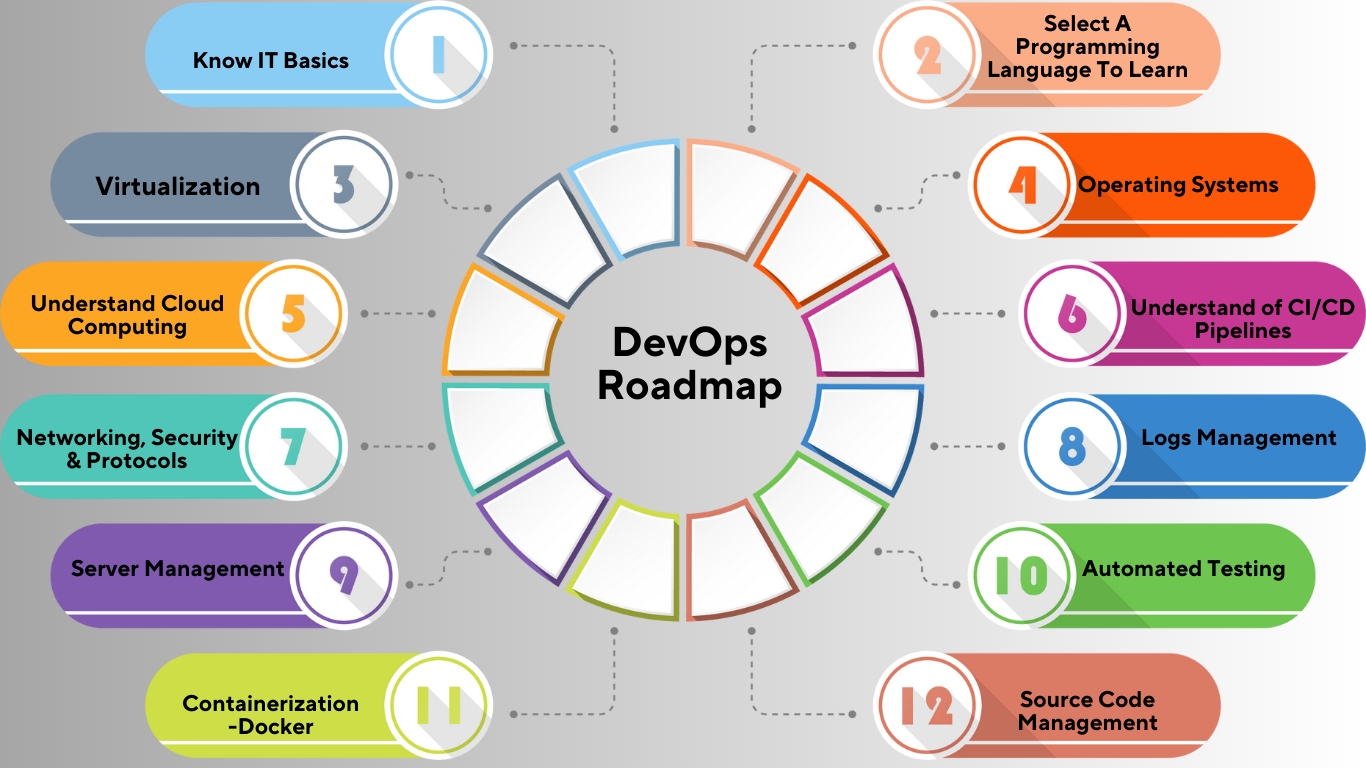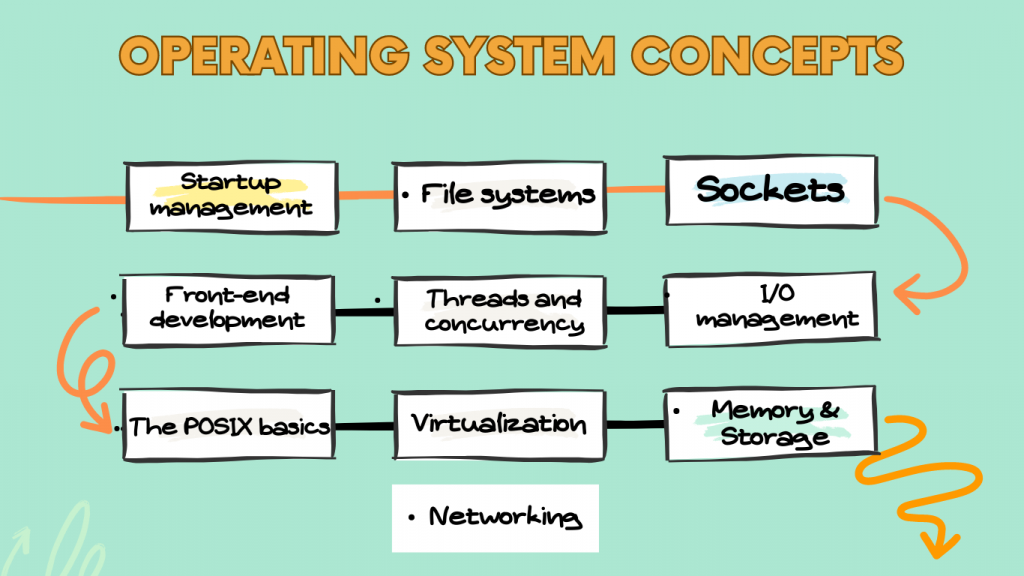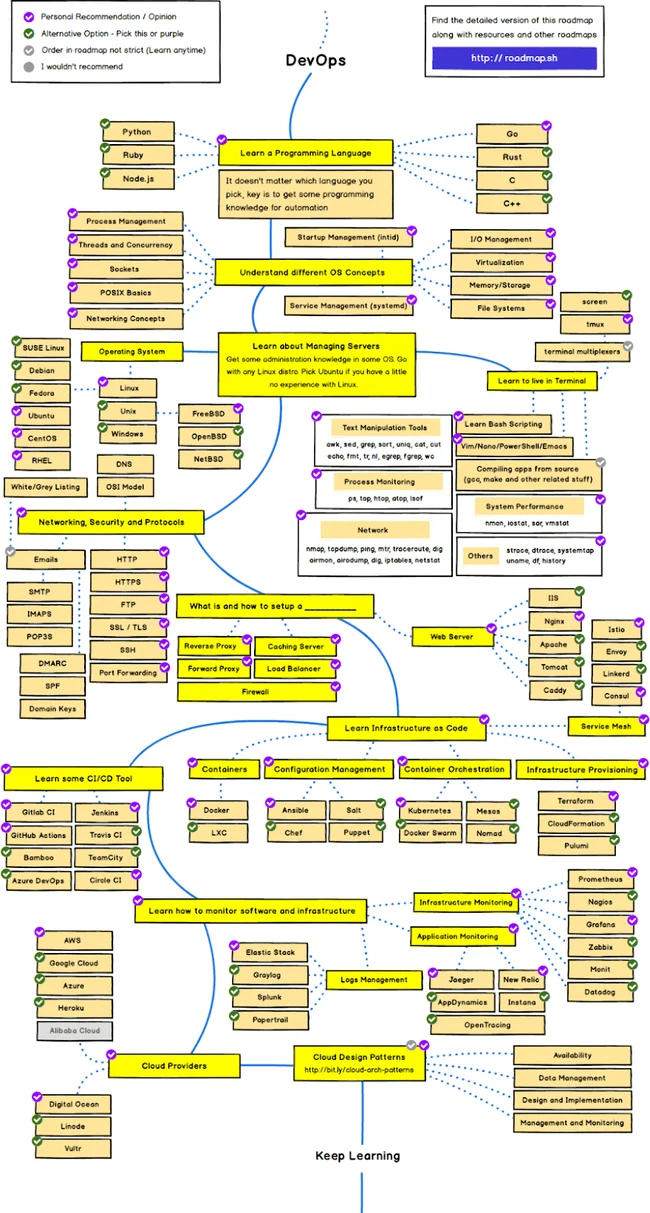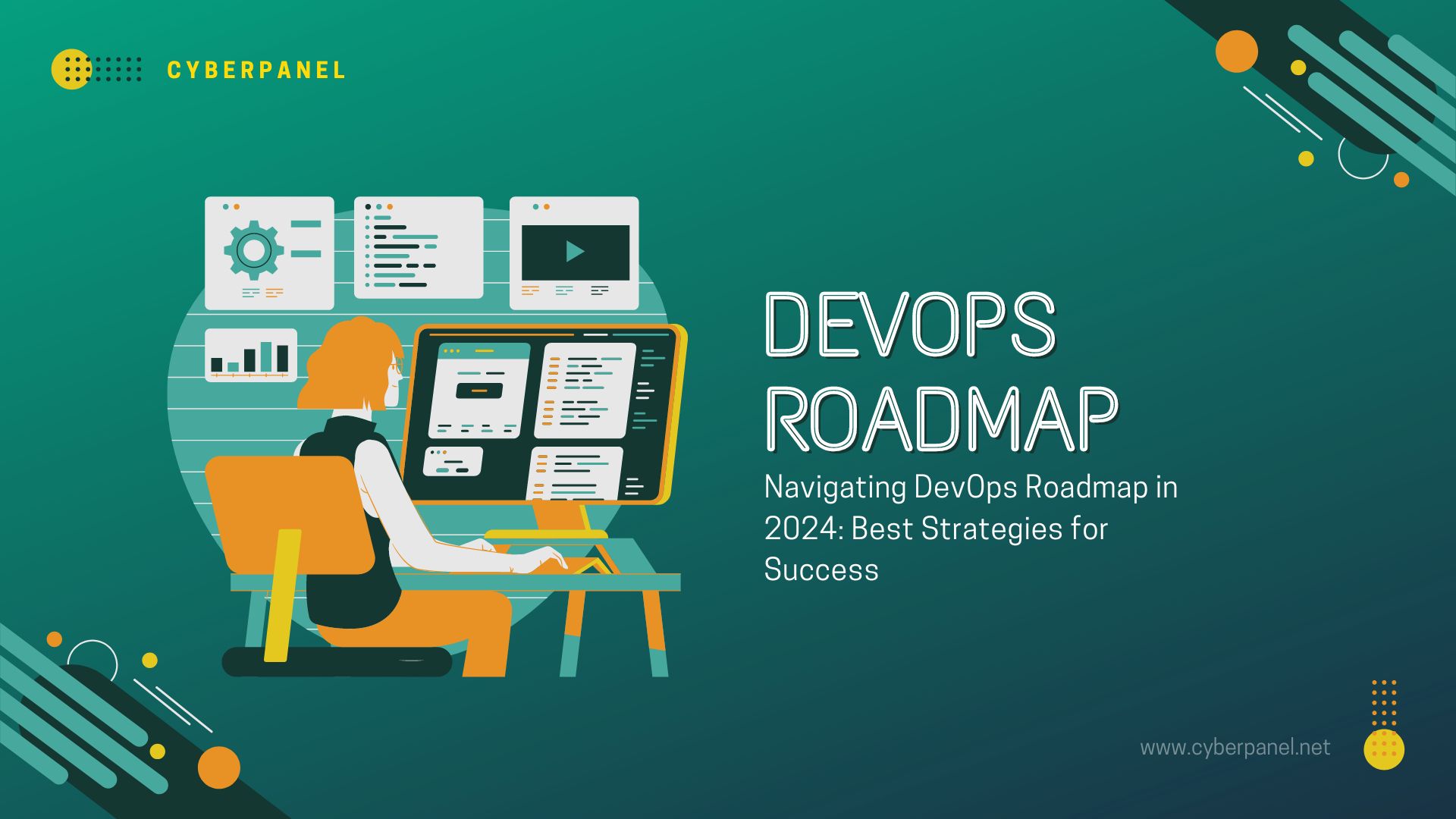Join us as we delve into the essential strategies and best practices for a successful DevOps roadmap in 2024 and beyond. First, we should have a clear understanding of what DevOps means.
DevOps enhances software development by combining Development and Operations, promoting cooperation, automation, and quicker feedback, enhancing efficiency, speed, and security.
Technology is evolving rapidly, and we’ve seen how the past few years have introduced a new shift in digital transformation and software development. The traditional business model is no longer viable, and to remain relevant in the extremely competitive business landscape, organizations need a DevOps roadmap.
To streamline workflows and promote creativity, Businesses can improve the quality of their software products and services, expedite delivery, and streamline operations by adopting DevOps ideas, processes, and technologies to understand the DevOps Roadmap. This calls for a clear shift away from specialized processes and toward unified development and operations teams working together.
In this article, we’ll discuss which effective strategies businesses can implement to construct a potentially beneficial DevOps roadmap and key trends in 2024.
How important are DevOps Roadmaps?
DevOps Roadmaps are extremely important to Tech companies, IT startups, and Healthcare sectors so a well-executed DevOps strategy ensures that customers have access to reliable, secure, and feature-rich applications that meet their needs and expectations.
Get exclusive access to all things tech-savvy, and be the first to receive
the latest updates directly in your inbox.
For companies looking to improve software development and delivery processes in terms of collaboration, speed, quality, agility, and security, the DevOps Roadmap is essential. Organizations can automate manual activities, optimize workflows, and promote a continuous improvement culture by implementing DevOps methods and principles.
This helps them react promptly to shifting market conditions and client input and enables them to provide software upgrades more regularly and dependably.
In the end, the DevOps roadmap benefits businesses more effectively and efficiently providing value to their clients.
DevOps Roadmap: Step-by-step guide

A roadmap is a visual tool that helps plan, prioritize, and communicate a software product’s strategy to all stakeholders involved in the development lifecycle.
Creating an effective DevOps roadmap requires appropriate planning and execution. It combines elements and techniques to develop a successful DevOps roadmap. For the operations teams of the company to efficiently oversee the integration of DevOps services within the company, a DevOps roadmap is essential.
So let’s begin the journey to helping you become a successful DevOps Roadmap.
Planning Your DevOps Journey:
1. Know IT basics
Making the codes immediately available for production is the DevOps team‘s main goal. DevOps engineers need to be familiar with Linux to understand deployment, operating systems, networking, virtualization, networking protocols, etc. These fundamentals will assist you in building a strong career as a DevOps engineer and a successful DevOps roadmap.
2. Select A Programming Language To Learn
Gaining expertise in coding is essential. Programming school programs are available through many boot camps and online coding classes. Learn the basics first, starting with HTML, CSS, Python, C++, and JavaScript.
We suggest you go with Python, which is an easy-to-use powerful programming language operated in web development, machine learning, and automation processes, enabling efficient and effective workflow language simple to comprehend syntax, and providing extensive library and framework support. It can easily be integrated with various platforms and tools so very appropriate for a DevOps Roadmap.
3. Virtualization
Virtualization creates a virtual version of something that was once physical. The virtualized resources often found in data centers include operating systems, servers, storage devices, and desktops. Through virtualization, fundamental hardware or software can be maintained separately. In hardware virtualization, actual computers and real operating systems are replaced by virtual machines (VMs).

- Application Virtualization
- Network Virtualization
- Desktop Virtualization
- Storage Virtualization
- Server Virtualization
- Data virtualization
4. Operating Systems: Know How To Run Terminals
Once you are familiar with operating systems, you should know how to perform systems tasks and operate terminals without the help of a GUI( graphical user interface).
PowerShell, Vim, Nano, and Emacs are names you should get familiar with. As a DevOps Engineer, your primary responsibilities are provisioning and managing the servers. Linux is the most used OS for servers, so it’s essential to be comfortable with the Linux and Command Line Interface (CLI).
The best way to familiarize yourself with Linux and CLI is to use Linux as your go-to development environment. Key things to learn are Bash Script, File Systems, File Management and Permission, and a basic idea of Virtualization text manipulation, process monitoring, system performance, networking, as well as compiling apps from source.
here’s a list of “operating system concepts,” a clear understanding you can review.

5. Understand Cloud Computing
Understanding cloud computing is important for a solid DevOps roadmap. DevOps teams can deploy and manage apps more effectively because of the scalability, flexibility, and affordability of cloud computing. Teams can use cloud services to automate infrastructure provisioning, use resources on-demand, and easily construct pipelines for continuous integration and deployment.
Again, a variety of DevOps tools and services, like container planning, scanning, monitoring, and logging, which are essential to present software delivery methods, are frequently offered by cloud platforms.
For this reason, companies looking to maximize their skill and innovation while streamlining their DevOps processes must have a firm grasp of cloud computing.
6. Understand of CI/CD Pipelines
Understanding the Continuous Integration/Continuous Delivery (CI/CD) process is extremely important for a good DevOps roadmap. This process is a part of the pipeline process for software delivery. Continuous Integration is the process where developers merge their code into a shared repository’s main branch. It helps to ensure effective operation and cost savings.
On the other hand, Continuous Delivery automatically releases the verified code to a repository after the Continuous Integration process. This process helps to make the release of software easier and more efficient. Several tools are available to implement continuous integration and continuous delivery (CI/CD) workflows. Some of the most popular ones include Bitrise, GitLab, Jenkins, and CircleCI.
7. Networking, Security & Protocols
For a successful DevOps roadmap, DevOps engineers have to deal with a lot of Servers. Data transmission over the internet requires networking and Data protection and safeguarding during transmission is known as security. For this, we have Scanners and Firewalls.
A DevOps professional must prioritize the security of the entire organizational environment throughout all stages of development, testing, deployment, and related activities. To achieve this, your company can automate security procedures, manage and restrict network access, and enforce various security policies.
Here are a few protocols you should know about for good DevOps roadmap Security:
- HTTP
- HTTPS
- FTP
- Firewalls
- SSH
- SSL/TTS
- IPsec and VPNs
- Port forwarding
- AT-TLS
- SNMP
- OSFP authentication
- Proxy access
8. Logs management
You need to learn how to manage logs when creating a DevOps roadmap. Logs assist you in listing system events and delving into the specifics. As a result, log monitoring will assist you as a future DevOps engineer in enhancing services and procedures, avoiding security flaws, and locating obstacles. These are some of the tools DevOps experts use:
- Splunk
- Elastic stack
- Graylog
- Papertrail
9. Server Management
For a DevOps roadmap, one of the primary responsibilities of a DevOps engineer is server management. These servers will be used to fulfill requests from users requesting information. It is important to familiarize yourself with common web servers and related services such as Apache, IIS, Tomcat, Linkerd, NGINX, Envoy, Istio, and Caddy.
10. Automated Testing in DevOps: Early and Continuous Quality Assurance
By reducing the amount of manual labor required, automated testing techniques such as unit, integration, and end-to-end testing help guarantee the reliability and quality of software releases. In a DevOps Roadmap, testing begins early in the development process, ensuring the product is continuously checked and improved.
This approach facilitates early feedback, enabling teams to detect and address bugs promptly. With testers involved throughout development, feedback from various stakeholders contributes to iterative improvements, resulting in a high-quality product. Version control systems further enhance collaboration, ensuring all team members are aligned and errors are swiftly resolved.
11. Containerization

Source: devtoDevops.com
Containerization is a very important DevOps Roadmap component, without this, you cannot develop a successful roadmap. For contemporary software development, containerization has emerged as the de facto standard.
Containerization is a technique used to bundle all the essential elements of an application, such as code, tools, libraries, runtime engine, settings, and dependencies, into one container or package. This approach helps reduce IT operation costs while simultaneously accelerating the application development process.
These container packages include all necessary components to run in any environment, such as laptops, clouds, and virtual machines. They facilitate rapid application deployment through quick development, testing, and production cycles. Docker is a widely used technology for creating and managing containers. It isn’t the exclusive option to manage and execute containers.
12. Source Code Management
To fully understand DevOps, being familiar with source code management (SCM) is crucial. Without this knowledge, your learning in DevOps remains incomplete. SCM plays a vital role in the DevOps workflow by offering version control systems (VCS) to track and manage changes. We recommend starting with Git and GitHub as your primary VCS tools as you embark on this journey.
Graphical Representation for DevOps Roadmap
You can easily stay on track with your DevOps Roadmap Journey by following our step-by-step strategies and further by looking at this interactive Roadmap – source by GitHub.

4 Common DevOps Roadmap Challenges
Creating a good and successful DevOps Roadmap may be simple but it does not come without challenges, and to achieve efficiency and desired results, DevOps engineers and experts need to consider these problems they may encounter during the process.
- Manual Testing and Deployment: It is ineffective, time-consuming, and less accurate to interfere during the testing and deployment stages manually. It results in unforeseen efforts, non-repeatable processes, and human error. Manual deployment reduces quality and reliability by increasing the likelihood of failure.
- Incompetence in DevOps and SDLC: In the software development industry, organizations must attain SDLC maturity for optimal software quality in the DevOps era. Yet, many face obstacles due to underdeveloped procedures and inaccurate assumptions. Achieving SDLC maturity remains crucial for success in producing top-notch software.
- Integration of Tools from Multiple Domains: All necessary procedures, including development, testing, and deployment, must be carried out continuously and repeatedly in DevOps integration. Putting the entire team in one location is difficult because they are from various departments. When work needs to be transferred from one department to another using a completely new set of tools and technology, productivity will be impacted.
- Obsolete Development Practices: Companies frequently have specialized teams not involved in other departments evaluating applications. Code testing and redeployment are cycles that facilitate collaboration. As teams decide what errors are acceptable for production, this approach results in increased technical debt, worse system stability and quality, and more unplanned work.
DevOps Roadmap Trends to Watch in 2024
Following are the new trends that can change the shape of your DevOps Roadmap in 2024.
- DevSecOps: Putting Security at the Heart of DevOps. DevSecOps integrates security into DevOps, focusing on security as code, with automated testing, vulnerability scanning, and compliance checks integrated into the DevOps pipeline.
- AIOps: Leveraging Artificial Intelligence and machine learning to improve IT operations by automating tasks, predicting and addressing issues, and providing system performance and reliability insights.
- GitOps: Extending Version Control to Infrastructure and Operations management can be made easier by the system, additionally, it will enhance version control, guarantee consistency across environments, synchronize changes with development, and increase transparency and audibility.
- Serverless Computing: Serverless architectures are becoming more and more common, such as Azure Functions and AWS Lambda. For event-driven and microservices-based applications, DevOps teams are utilizing serverless to lower operational costs and increase scalability.
Final Thoughts
In conclusion, to successfully navigate the DevOps roadmap in 2024, organizations need to implement a deliberate and cooperative strategy based on a thorough understanding of DevOps concepts and methods.
DevOps is a continuously growing industry and there’s no stopping its evolving advancements with machine learning and AI, keep up to date with the newest trends and keep improving your DevOps skill
By focusing on crucial elements such as infrastructure as code, continuous integration/delivery, automated testing, containerization, monitoring, and logging, companies can create robust and effective software delivery pipelines that drive innovation and accelerate corporate growth.
Adopt the best practices discussed in this article, customize them to suit the specific needs of your organization, and embark on your DevOps journey with confidence and purpose in 2024.
FAQ’S
How to become a DevOps engineer?
To become a DevOps Engineer is very simple, follow these 12 steps:
1. Know IT basics
2. Select A Programming Language To Learn
3. Virtualization
4. Operating Systems: Know How To Run Terminals
5. Understand Cloud Computing
6. Understand of CI/CD Pipelines
7. Networking, Security & Protocols
8. Logs management
9. Server management
10. Automated Testing in DevOps: Early and Continuous Quality Assurance
11. Containerization
12. Source Code Management
What Is DevOps Roadmap?
A DevOps roadmap is a strategic guide outlining the adoption and implementation of DevOps practices within an organization. It details the necessary steps, tools, practices, and skills required to achieve a successful DevOps transformation.
What role does cloud computing play in a DevOps roadmap?
Cloud Computing is essential to a DevOps roadmap because it offers development and operations teams resource efficiency, scalability, and flexibility.
providing experts with a smooth connection with a DevOps tool, speeding up application deployment, and helping automate processes related to infrastructure management.
How does a DevOps roadmap address security concerns in software development?
DevOps roadmap integrates security procedures including code analysis, vulnerability scanning, and security testing all the way through the software development lifecycle (SDLC). Organizations can proactively detect and combat security threats by utilizing tools like DevSecOps and incorporating security into every step of development.
Future DevOps trends to look out for?
AI and Machine Learning Integration: DevOps teams will increasingly leverage AI and machine learning algorithms for automation and predictive analytics.
GitOps Adoption: Organizations will embrace GitOps for streamlined deployment processes and infrastructure as code compliance.
Serverless Computing: The adoption of serverless architectures will rise, enabling efficient application development without managing infrastructure.
AIOps: Leveraging Artificial Intelligence and machine learning to improve IT operations.
How can businesses make sure a DevOps roadmap is implemented successfully?
For a successful DevOps roadmap implementation, strong leadership support, investment in the right tools, cultural change, cross-functional team collaboration, and an emphasis on continuous learning are all necessary.



